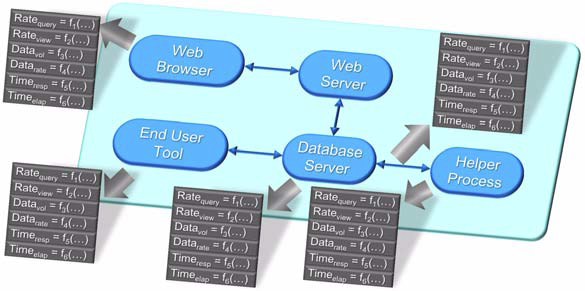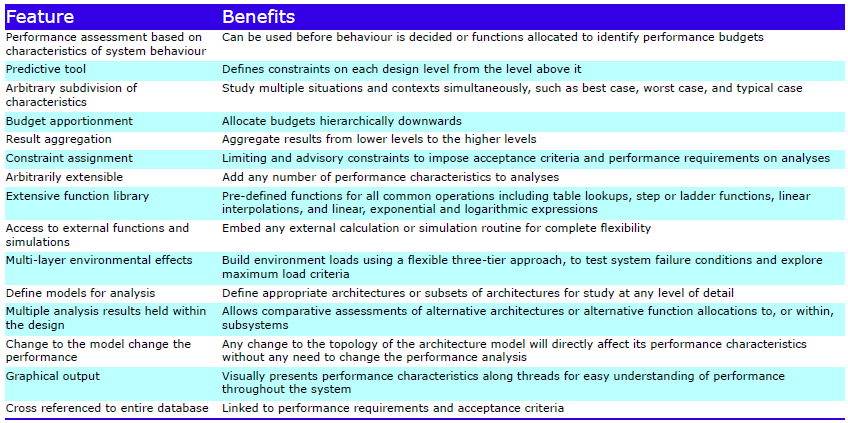Cradle-PERF Module
The Cradle PERF module applies user-defined calculations to an architecture model, to compare the performance of alternative architectures and apportion performance budgets to subsystem, component and equipment designs.

Simulation is an activity to reproduce a system’s behaviour in an artificial environment to test the system in a variety of scenarios. Simulation is used where testing the real system is either dangerous, impracticable or too time-consuming or expensive. The most fundamental behavioural characteristics of systems are set early in the design process, as alternative architecture topologies are assessed and performance budgets are set. But as there is no behaviour allocated to the components, it is not possible to build a simulation.
Performance Assessment
Performance assessment solves this problem. It is used before behaviour is known and allocated and so before simulation can be used. It can be used:
- To confirm if a proposed architecture is viable
- To compare performance characteristics of candidate architectures
- To define budgets for lower design levels (apportionment)
- To aggregate actual values
Performance assessment is expressed in user defined characteristics, typically concerned with timing, data error or precision, such as:
- Bandwidth
- Utilisation
- Size
- Cost
- Data rate
- Staleness
- Weight
- Power
They can be subdivided, for example to study best case, worst case and typical conditions. They are held as user-defined formulae in the specifications and data definitions of the symbols in the architecture models’ diagrams.
Performance Characteristics
Any number of performance characteristics can be defined and associated with each diagram symbol. Each has its own formula. These are defined using a function library and user-defined calculation routines. This library contains logical, arithmetic, logarithmic, exponential, ladder, table lookup and interpolation routines, amongst others.
System performance requirements are applied as constraints to these characteristics by linking the items in the database and defining ranges of values for the performance characteristics that should not, or may not, be exceeded.
Analyses
Analyses are run on state models that are sets of interconnected diagrams at appropriate levels in the architecture.
A state model can have external loads applied to it to represent different usage scenarios. An analysis can contain many such environmental loads. The environmental loads are defined as values of any of the performance characteristics at the external input(s) to the model.
Each analysis applies the environmental load and calculates performance characteristics for all of the symbols in the state model’s diagrams using the formulae and constraints in each symbol. The results are therefore quantitative. They are stored inside the symbols’ descriptions.
The results can be reported in the same manner as other information in a Cradle database. They can also be graphed. The graphs will typically show the values of specified characteristics along a path through the model, termed a thread. Each graph will show any constraints applied from the system requirements and the effect of the constrains on the analysis results. The data in such graphs can be exported to CSV.
Any number of thread analyses can occur.
The results will show that an architecture is viable if none of its constraints are violated.
Since the performance data is built into the architecture model, any changes to the model’s topology (such as a change to the architecture) will be automatically reflected in changes to the performance results. This allows easy comparison between alternative architectures.
The analysis results are the characteristics of a viable architecture. Hence, they are the constraints or budgets for the next level of design. So the analysis of each level produces performance constraints for the next level. This process can continue through the design levels until the system behaviour is sufficiently defined for simulation to be practicable.
Feature Summary

Please contact 3SL for further information about adding a Cradle PERF module to your existing system.

